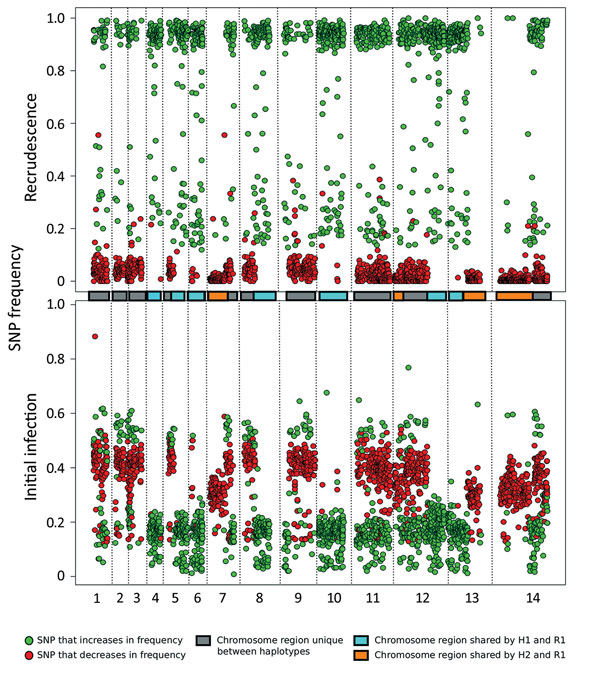Genomic Characterization of Recrudescent Plasmodium malariae after Treatment with Artemether/Lumefantrine
Gavin G. Rutledge
1, Ian Marr
1, G. Khai Lin Huang, Sarah Auburn, Jutta Marfurt, Mandy Sanders, Nicholas J. White, Matthew Berriman, Chris I. Newbold, Nicholas M. Anstey, Thomas D. Otto

, and Ric N. Price

Author affiliations: Wellcome Trust Sanger Institute, Hinxton, Cambridge, United Kingdom (G.G. Rutledge, M. Sanders, M. Berriman, C.I. Newbold, T.D. Otto); Royal Darwin Hospital, Casuarina, Northern Territory, Australia (I. Marr, G.K.L. Huang, N.M. Anstey, R.N. Price); Menzies School of Health Research and Charles Darwin University, Darwin, Northern Territory, Australia (S. Auburn, J. Marfurt, N.M. Anstey, R.N. Price); Mahidol University Faculty of Tropical Medicine, Mahidol-Oxford Tropical Medicine Research Unit, Bangkok, Thailand (N.J. White); University of Oxford Centre for Tropical Medicine and Global Health, Oxford, United Kingdom (N.J. White, R.N. Price); University of Oxford Weatherall Institute of Molecular Medicine, Oxford (C.I. Newbold)
Main Article
Figure 2

Figure 2. Analysis of the minor haplotype (H2) that caused recrudescence of Plasmodium malariae infection in a patient at Royal Darwin Hospital, Darwin, Northern Territory, Australia, March–April 2015, showing distribution of SNP alternative (nonreference) allele frequencies across the 14 chromosomes (boxes in the middle and dotted vertical lines) in the initial infection (bottom plot) and the recrudescence (top plot). The SNP colors (green, increasing in frequency; red, decreasing in frequency) form 2 clear bands, corresponding to H1 (yellow box) and H2 (pink box). H2 probably caused the recrudescence given that all of its alleles increase considerably in frequency. Colored boxes in center of chart indicate chromosome sharing. H1, haplotype 1; H2; haplotype 2; R1, reference genome; SNP, single-nucleotide polymorphism.
Main Article
Page created: July 17, 2017
Page updated: July 17, 2017
Page reviewed: July 17, 2017
The conclusions, findings, and opinions expressed by authors contributing to this journal do not necessarily reflect the official position of the U.S. Department of Health and Human Services, the Public Health Service, the Centers for Disease Control and Prevention, or the authors' affiliated institutions. Use of trade names is for identification only and does not imply endorsement by any of the groups named above.
